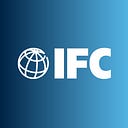Support women-owned businesses for economic growth in an uncertain world
By Philippe Le Houérou
This article was originally published on Devex on March 09, 2020.
Globalization, new technologies, and climate change are altering the way we live and work. In a fast-changing world, it can be difficult to identify the engines of growth for tomorrow. Sometimes, the answer lies in plain sight.
Women-owned businesses are powerful — and largely untapped — drivers of economic growth. A recent study of startups by the Boston Consulting Group and MassChallenge indicated that those founded by women are more successful at generating revenue. Looking at data over a five-year period, the study revealed that women-owned startups generated 78 cents for every dollar in funding — more than twice the amount that companies founded by men produced.
Women-owned businesses also make outstanding customers for financial institutions. Banking clients of my organization, the International Finance Corporation, or IFC, have reported that small and medium-sized enterprises that are women-owned have significantly fewer nonperforming loans when compared with their overall lending portfolio. In fact, for 2018, the NPL ratio for loans to businesses owned by women was a stunning 39% better than the average.
Nevertheless, women still lack the financing they need to grow their businesses, especially in developing countries. The current unmet demand for credit among women-owned formal micro SMEs in developing markets is estimated at $1.7 trillion. This gap presents an immense opportunity for financial institutions seeking new markets and sources of growth.
Throughout much of the developing world, women-owned SMEs also face considerable obstacles in accessing trade finance. Women-owned SMEs that export are found to earn more, pay more, and create more jobs than companies that operate domestically. Yet, according to the International Trade Centre, only 1 in 5 companies that export are owned by a woman.
Moving forward, we need to be creative in mobilizing private capital and partnerships that broaden the role of women as drivers of economic growth.
Here are three steps that can be taken right now:
First, private sector financial institutions need to design banking services tailored to meet the needs of women entrepreneurs. Women face historical, social, and cultural barriers that manifest themselves through unconscious bias in the design and delivery of business services and finance — a bias that leads to missed opportunities for growth. Services designed for women help banks gain market share and develop valuable tools — such as business-to-business platforms, legal services, networking, and management training — that can benefit all customers, not just women.
Second, bank regulators should generate and share sex-disaggregated data on finance to women business customers. Good data will allow financial institutions and public sector actors alike to better understand the market they are missing. The World Bank Group is generating and sharing data — such as the Global Findex database survey of financial inclusion, the MSME finance gap database, and the “Women, Business and the Law” report — but we need more data from the public sector.
Third, financial institutions and businesses should seek diversity on their boards of directors and senior executive teams so that they can better understand the dynamic landscape of customers, employees, and industry trends. The International Monetary Fund has produced research demonstrating that the presence of women on bank boards is associated with greater bank stability, including thicker capital buffers and lower proportions of nonperforming loans. Also, McKinsey & Company research has repeatedly shown that higher gender and ethnic diversity is associated with financial returns above industry averages.
This work is urgent. Globally, 9 out of 10 new jobs are created by small businesses, and every month we need 3.3 million new jobs worldwide just to meet the needs of a growing workforce.
With the fundamental business case that providing financial services to women creates jobs, improves lives, and generates bottom-line value for banks, IFC’s Banking on Women business partnered with Goldman Sachs to create The Women Entrepreneurs Opportunity Facility in 2014.
Since 2012, IFC has invested and mobilized more than $2.6 billion in financial institutions for lending to women SME entrepreneurs, as well as leading initiatives such as gender bonds and a women-focused trade finance program — incentivizing banks to increase trade finance for women importers and exporters and encouraging them to measure their finance to female entrepreneurs.
But these actions are not enough. It will take further collaboration between multilateral institutions, governments, and the private sector to fill the substantial funding gaps for women-owned businesses around the world — by designing products and services with women in mind, by generating sex-disaggregated data, and by diversifying corporate management and boards.
Women offer vast potential as drivers of growth and innovation. The time to unleash that potential is now.
Philippe Le Houérou is CEO of the International Finance Corporation
